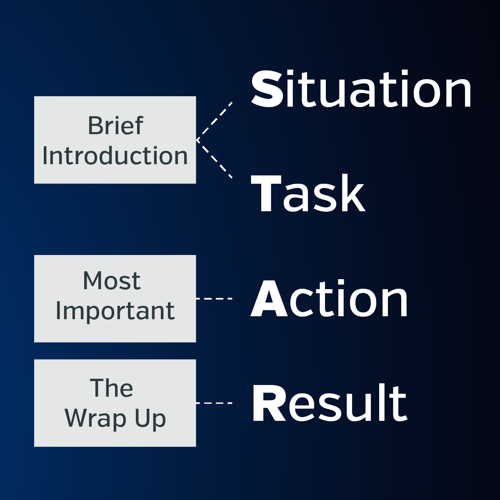So you have a job interview and you want to be prepared. Good news! You’ve come to the right blog post.
My name is Danielle Sol and I’m a Lead Recruiter for Dev10. It’s my job to interview the hundreds of people that apply to Dev10 to become a Software Developer or Data Engineer every year. Multiply that across the Dev10 team of recruiters, and you’re talking about conducting thousands of interviews. Given that experience, I’m here to tell you that no matter how nervous or overwhelmed you might feel about a job interview, you can walk into it (or log into it) feeling confident, prepared, and ready to respond to any questions that get thrown your way.
Reflect on Your Past Experiences
First, think about your background and experience. What experiences are you proud of? Which were a struggle? Identify moments that stand out – times you learned something or demonstrated what you’re made of. What are examples that vividly describe who you are and what you can do. This is really what the interviewer is trying to learn during an interview. They are trying to get to know you through your past experiences. If you need inspiration, try Googling sample behavioral-style interview questions.
Prepare a Library of Examples
Come up with about 5-10 true and specific experiences from your past. Try to think of at least five so you will have enough to pick from—but no more than 10 or you will have too many. These examples will be your library of prepared answers that you can pull from during an interview.
How to Use STAR in a Job Interview
Now that you have your topics, you still need to ensure you are presenting them well and getting to the right level of detail. The best way to do this is to structure your answers using STAR, which stands for Situation, Task, Action, and Result.
- Situation (S) and Task (T) is your introduction. You’ll want to give the interviewer context to understand your example. But keep it brief: 1-2 sentences are usually enough. For example, “I had a Business Marketing class and I was assigned a project to create a marketing plan for a local business.”
- Action (A) – this is the most important part! This is your opportunity to tell the interviewer what you actually did. What skills did you demonstrate? Why did you take the approach you did? What tools did you use to accomplish these actions? This is where you want to spend the most time.
- Result (R) is the wrap up. You can even say, “This resulted in…” Tell me what happened. Did you get a good grade? Were you recognized by your team? Did you learn something? What did you take away from this experience? Again, keep this brief, but don’t leave it out! One of the most common mistakes Dev10 Recruiters see during the interview process is candidates that leave out the Result.
Time to Practice!
Once you have your 5-10 examples in the STAR format written down, then you should PRACTICE them! Tell them to your friends and family. Record yourself on your phone and listen to it or watch it back. Did you get everything you wanted to cover across? Did you rush through your answers? Practicing takes time, but it’s well worth the investment!
What to Do on the Day of Your Interview
It is interview day and the first question is asked – take a second to think. Go through your library of prepared and practiced examples, pick the best one, potentially changing it a little to answer the question asked, and then tell your story.
You will find that the same experience could be used to answer many different questions – it is all about what you emphasize in your answer. For example, a time that you did well with a class project could be used to show your ambition, analytical thinking, problem solving or communication skills depending on what part of it you want to focus on.
In your Result (R) section, you can even connect your answer back to what was asked by saying, “This shows my ambition, analysis, etc. because…” You will find that these 5-10 examples should cover the vast majority of the questions asked.
With this approach, you are sure to ace your interview and look like you knew the questions ahead of time!
Are you interested in becoming a Software Developer or Data Engineer? Launch Your Career today!







